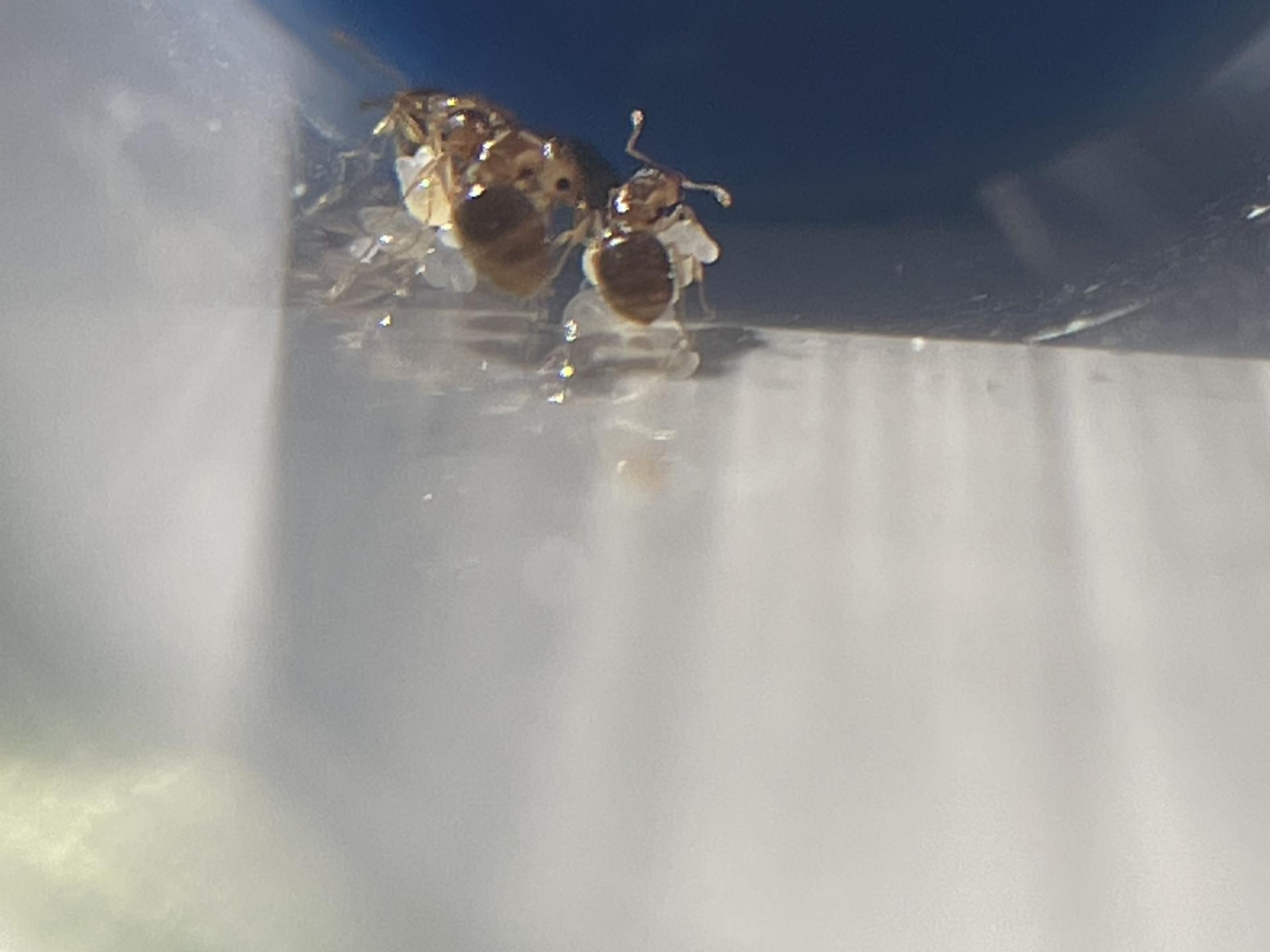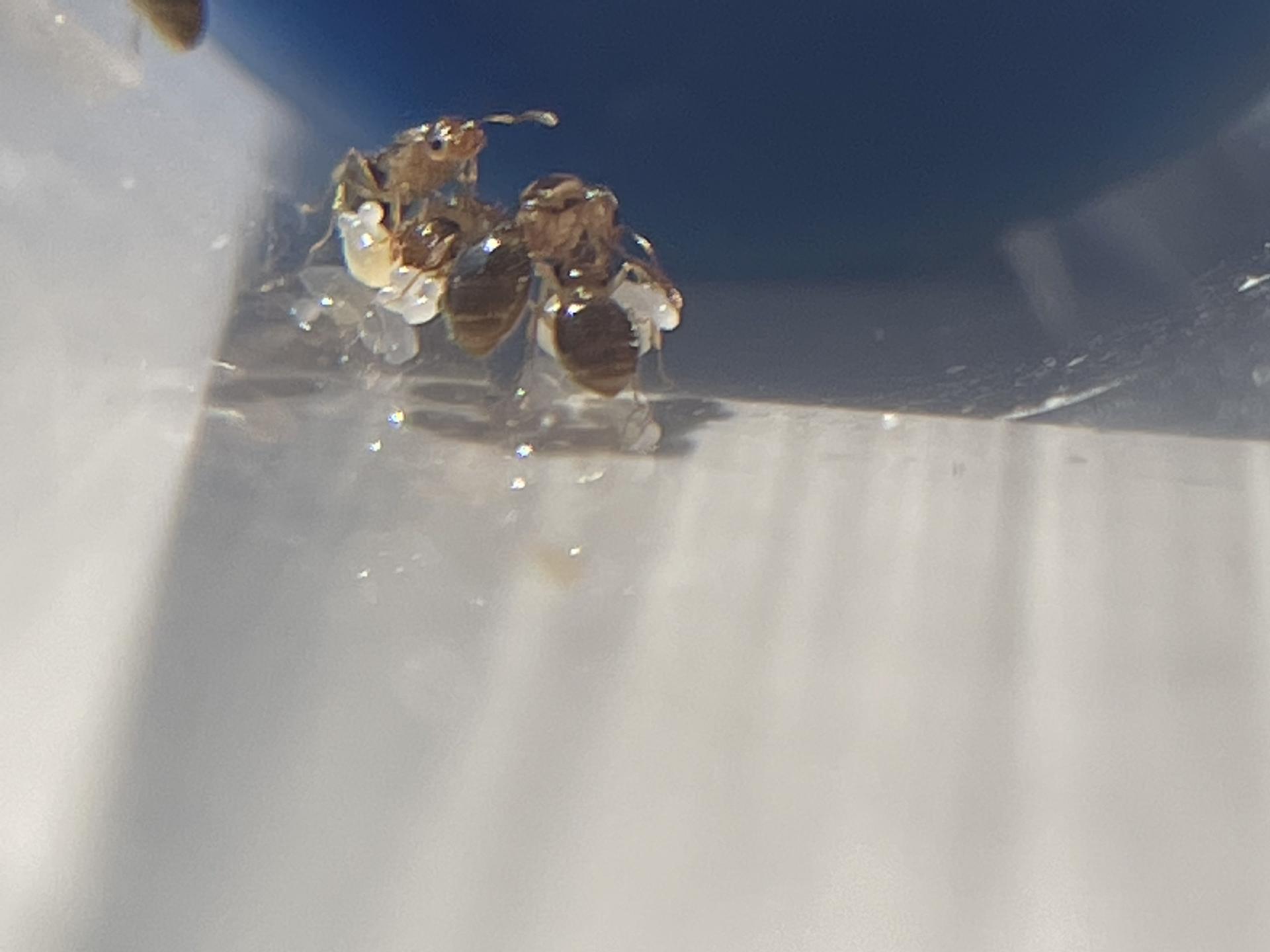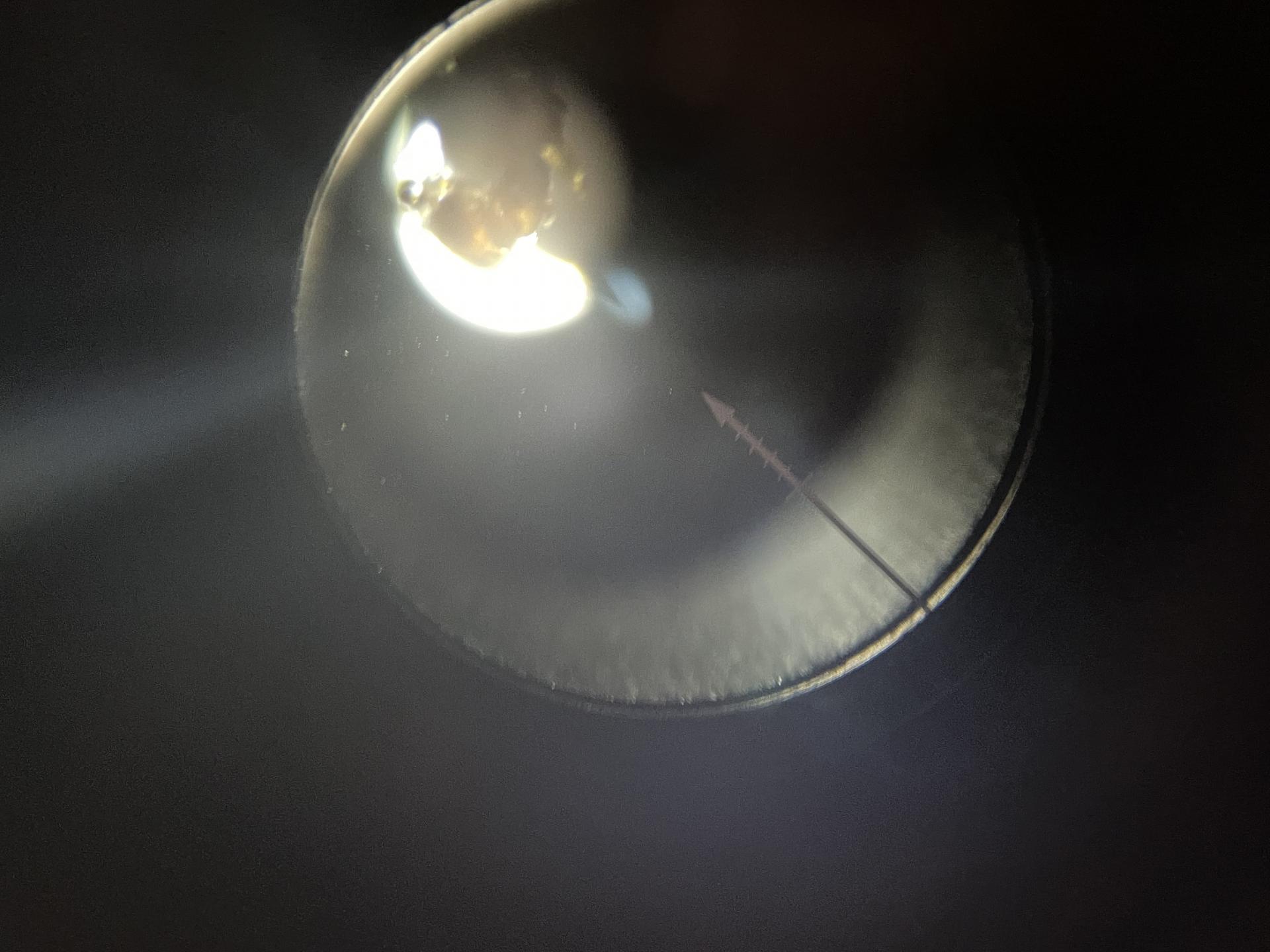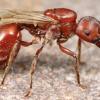After a fairly unsuccessful anting summer (queens caught that founded: 0), I decided to bite the bullet and buy some queens. Received them a couple weeks ago. They had varying levels of brood, with a pair of two even having nanitics. But after combining them into one test tube, they were largely moved back to square one.
A microscope shot of one the deceased nanitics:
Just wondering, how many segments do you count for this antennae? I count 11.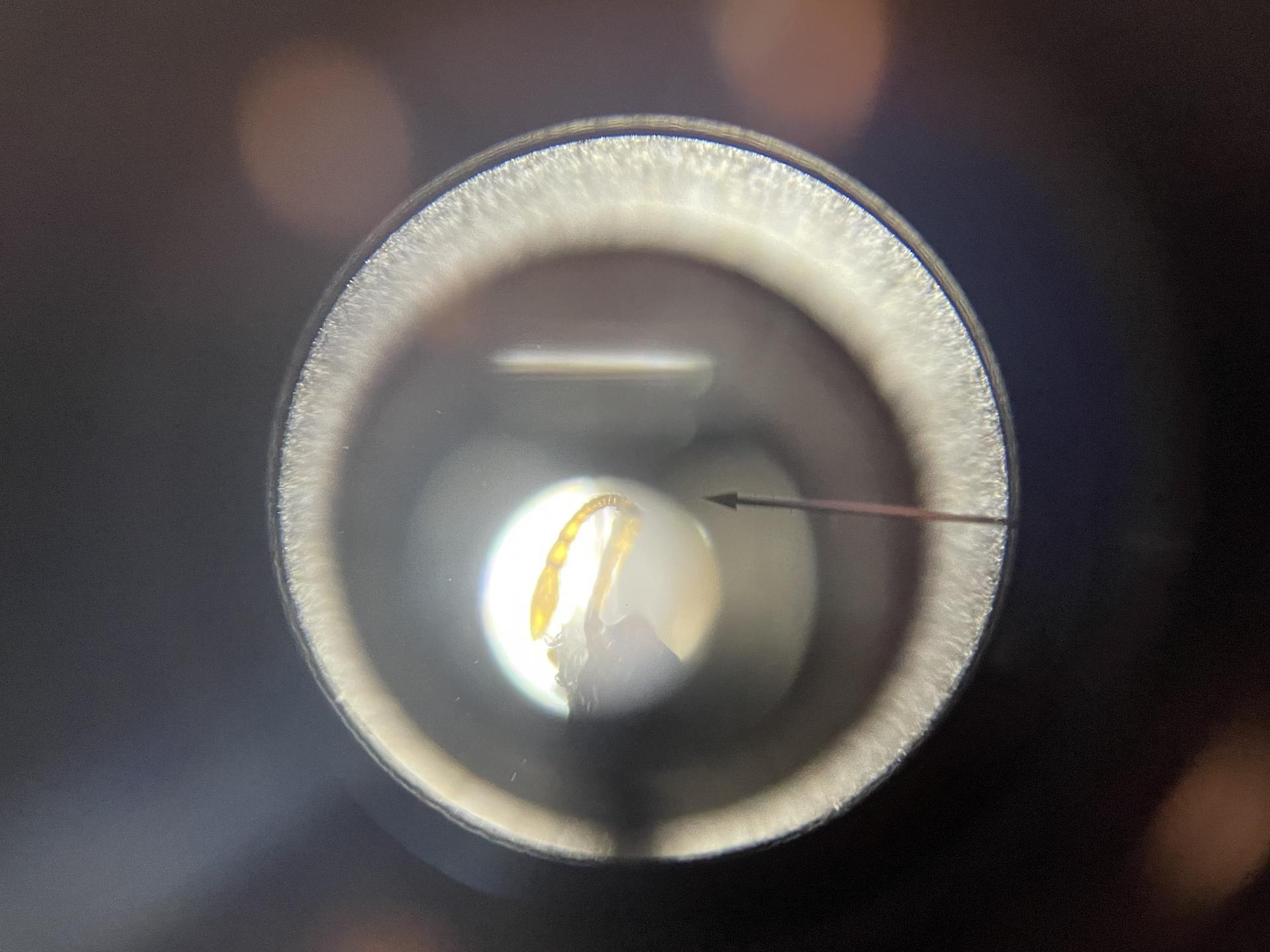
Edited by JamesJohnson, September 4 2021 - 1:32 PM.




